Government Convenes Two-Day National Conference of Power and New & Renewable Energy Ministers to Address Challenges in the Power Sector
The Union Minister for Power and New & Renewable Energy Shri R. K. Singh met with his counterparts in states and union territories and shared his views on the steps that are being taken to address the growing power demand in the country, which he said is a sign of the fast growth of the Indian economy. Addressing the opening session of the National Conference of Power and New & Renewable Energy Ministers of States & UTs, being held at Bharat Mandapam in New Delhi during November 6 – 7, 2023, the Minister said that India would not have become the fastest growing large economy of the world if we had not brought about a transformation in power sector. “Economic growth is dependent on the power sector. Power sector is a fundamental driving force in the progress of the nation.”
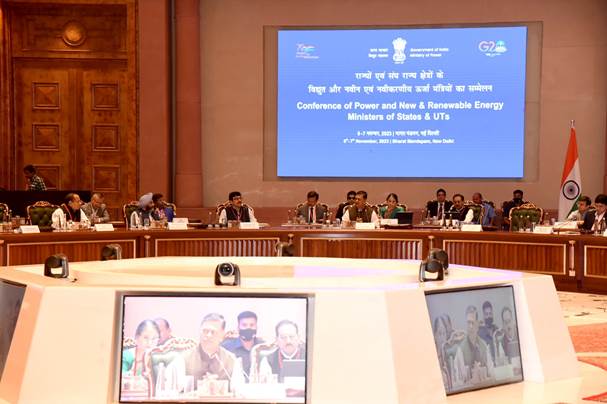
“No compromise on power needed for growth, even if it means addition of coal-based capacity”
Speaking about the challenges, the Minister said that while the forthcoming COP-28 meeting is expected to focus on reducing coal usage, India is not going to compromise on availability of power for our growth. “COP-28 is going to be held in UAE. There is going to be pressure on nations at COP to reduce usage of coal. We are not going to do this, since our point of view is clear, that we are not going to compromise on availability of power for our growth, even if it requires that we add coal-based capacity. At the same time, we need to and we will achieve the targets we had set for ourselves at COP.”
“Power demand has increased phenomenally, showing how fast our economy is growing”
The Power Minister pointed out that the second challenge is that of meeting the fast-growing power demand but the government is committed to address it by adding enough capacity to meet the demand. “The demand increased by 20% more than last year, in August, September and in October 2023. This shows how fast our economy is growing. Also, we met peak demand of 2.41 lakh MW recently while peak demand was 1.9 lakh MW in 2017-18. If the peak demand grows even higher, we may not be able to meet it. This is one challenge we need to address.”
“To meet growing demand, all states need to run all power plants and at full capacity”
Shri Singh said that one way the government has thought of addressing the challenge of growing demand is that all power plants need to be run and at full capacity. “We observe that some states do not run their power plants at peak capacity and instead seek power from the Centre’s pool. If some state is not running their plants at peak demand, we will not be able to supplement from the central pool. We have to focus on making sure that all our plants run and all our plants run at full capacity.”
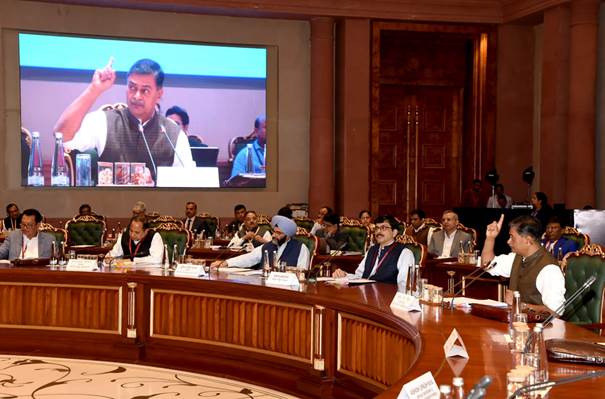
“Need about 80,000 MW of thermal capacity under construction, to meet growing demand”
Besides this, we need to add capacity as well, said the Minister. “Earlier, around 25,000 MW was under construction, mostly in the public sector. But this was not sufficient; so, we started work on adding 25,000 MW, but we need to start work on additional 30,000 MW. I.e., we need about 80,000 MW of thermal capacity under construction. All this capacity addition is being done through the public sector, private sector investment has not started coming, but I am quite certain that private sector investments will come, as we have made the system viable and the sector gives returns.”
“All states should do coal blending, to address supply-demand gap”
The gap between domestic coal consumption and domestic coal arrival is another challenge, informed the Minister. “I am certain that Coal India must have increased production, but our demand has increased faster. This has led to shortages and that’s why we need to do 6% blending. NTPC and DVC are doing the blending, states too should do the blending, depending on shortage of coal.”
The Minister stressed that available coal will have to be distributed equitably among states, depending on the requirements. “We don’t play politics in electricity. It is a fully integrated system; power is generated in some state and consumed in 3-4 different states. Coal is produced somewhere, wind somewhere and solar somewhere else. We are not going to do any favouritism. The shortage will have to be shared by all and supplemented by all.”
The Minister urged the States to set up new power plants near coal belts so that issues related to long-distance transportation of coal and availability of rakes do not arise.
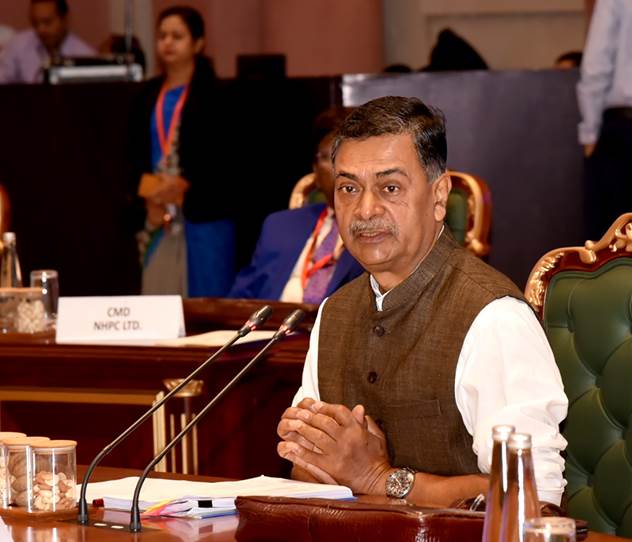
“Need to make faster progress in RDSS implementation, to further strengthen distribution sector”
The Minister underlined the need to increase the pace of execution of projects and utilisation of funds under RDSS.
“Use renewables to power agriculture, save coal-based capacity for non-solar hours”
Shri R. K. Singh asked the States to leverage PM-Kusum to switch agricultural load to renewables and conserve coal-based generation for the night, since the challenge is during non-solar hours.
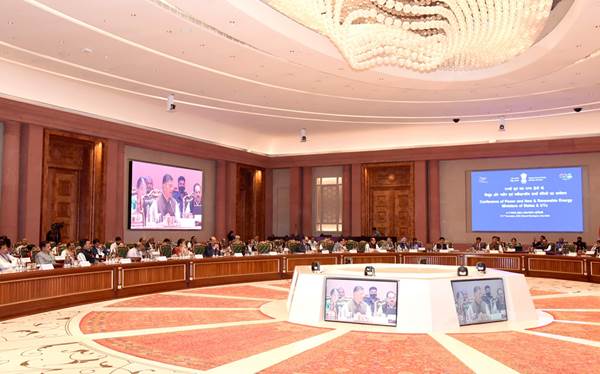
“10,000 MW thermal capacity and 21,000 MW renewable energy capacity to be added in FY 2023-24”
Welcoming all participants of the conference, the Power Secretary Pankaj Agarwal informed that we the nation is very much on its way to add about 10,000 MW of thermal capacity and 21,000 MW of renewable energy capacity during this financial year. “We are taking concrete steps to move towards total capacity of 900 GW by 2031-32.”
Shri Agarwal said that on the transmission front, the country has moved to General Network Access since 1st October, 2023 and that new schemes are being regularly sanctioned. “The Government of India has sanctioned Rs. 21,000 crores project to evacuate 5,000 MW renewable energy from Ladakh. On distribution sector, we have seen significant results since implementation of Late Payment Surcharge Rules. The overdue amount has come down from Rs. 1,39,000 crores to around Rs. 67,000 crores. AT&C losses of distribution utilities are coming down; under RDSS, states have already awarded works for Rs. 81,000 crores against total sanctions of Rs. 1,21,000 crores for loss reduction works.”
The Secretary said that on energy efficiency front, the country has launched the carbon market. “We have started with mandate-based market and we will soon move to offset mechanism. We have started STAR labelling scheme for solar PV cells and panels; a large programme for demand aggregation for induction cookstoves and efficient fans has been launched by the Minister.”
On renewable energy front, Shri Agarwal informed that Battery Energy Storage VGF Scheme has been sanctioned for 4,000 MWh capacity. “The RPOs have been notified under Energy Conservation Act. We have already simplified captive power plant regime and we are on our way to simplifying open access regime, to promote integration of renewable energy in the system.”
“Notification on minimum share of RE consumption sets a clear path for RE consumption”
Secretary, New & Renewable Energy, Shri Bhupinder Singh Bhalla said that installed capacity of renewable energy has increased significantly in the last 9 years. “The Government of India has set an ambitious goal of installing 500 GW non-fossil-fuel energy capacity by 2030. As of September 30, 2023, we have installed 186 GW capacity from non-fossil sources, which accounts for about 43.75% of our total installed capacity. The last nine years has witnessed the fastest growth in renewable energy sector among all large economies; installed capacity has more than doubled and renewable energy generation has also increased significantly. We have attracted over 80 billion dollars in investment, including substantial FDI.”
Shri Bhalla stated that the proactive approach and transformative policies of state governments have been crucial for this progress. “States will continue to play a leading role to our goal for 2030. Policy initiatives of the Centre like competitive bidding framework, concessions on transmission charges, and various incentive programmes, have attracted private investment and enabled capacity addition. Recent amendment of Energy Conservation Act 2001, empowering the central government to specify minimum share of consumption of renewable energy sources is another step in this direction. The notification issued by Ministry of Power will come into effect from April 1, 2024, setting a clear path for renewable energy consumption.”
The New & Renewable Energy Secretary asked the States to overcome challenges in PM KUSUM and Rooftop solar scheme for increasing adoption of solar energy. The Secretary urged all states to align their regulations with Green Open Access Rules, to promote conducive environment for renewable energy. He added that development of dedicated green hydrogen policies by various states is a promising step. Shri Bhalla stressed that state governments need to provide necessary support to ensure timely commissioning of manufacturing facilities for PV modules.
The inaugural session can be watched here.
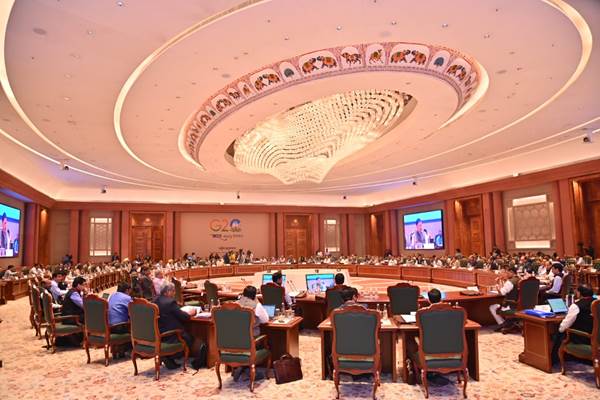
The agenda for the two-day conference includes the following schemes and issues pertaining to the power and renewable energy sector of the country.
- India’s NDCs and new RPO along with resource adequacy plan
- PM-KUSUM Scheme
- Rooftop Scheme Phase – II
- National Green Hydrogen Mission
- Solar Parks
- Green Energy Corridor
- Issues related to PLI Scheme
- Issues related to wind energy
- Green Open Access Rules
- Review of RDSS
- Review of viability matrices of DISCOMs
- Increasing demand and capacity addition.
- Pump Storage Projects (PSPs)
- National Transmission Plan
- Implementation of Rights of Electricity Consumers
- Carbon Market
- State Level Committee on Energy Transition
- e-Mobility (Role of States)
- EESL dues (Street Lights National Programme)

